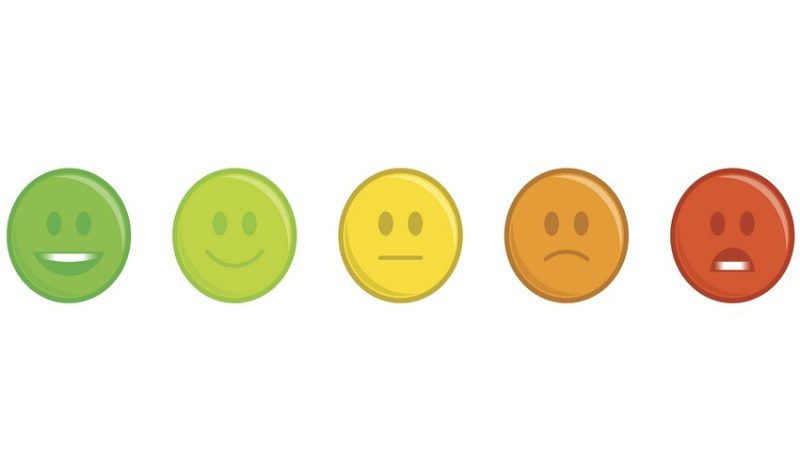Emotional dysregulation is a term that describes an individual’s inability to control or regulate their emotional responses to stimuli or situations. It can manifest as quick, intense, and often overwhelming emotional reactions that are disproportionate to the event.
Emotional dysregulation is common in a variety of mental health conditions, including borderline personality disorder, post-traumatic stress disorder, and mood disorders. The ability to manage our emotions effectively is crucial for maintaining personal well-being, building strong relationships, and navigating the complexities of life.
In this article, we will explore several strategies for managing emotional dysregulation, ensuring each section provides in-depth insights and actionable tips.
Understanding Your Emotional Triggers
The first step in managing emotional dysregulation is identifying and understanding your emotional triggers. Triggers can be anything—a word, a person, a type of situation—that prompts an intense emotional reaction.
These triggers are often rooted in past experiences, unresolved conflicts, or unmet needs. To start this process, keep a journal of emotional episodes, noting what happened just before the emotional surge.
Look for patterns: Do specific themes, such as rejection or failure, recur? Are there specific individuals whose actions or words tend to set you off?
Once you’ve identified your triggers, it’s essential to delve deeper. Ask yourself what about these triggers affects you so profoundly. Is it a fear of being alone, a sense of being disrespected, or memories of past traumas?
Grasping the root causes behind your emotional reactions often diminishes their influence. While this insight won’t eradicate the trigger, it arms you with the ability to devise and employ coping tactics in advance, curtailing the emotional response before it intensifies. Therapy for emotional dysregulation often focuses on developing this type of understanding, enabling you to anticipate and manage your emotions proactively.
For example, if you know that tight deadlines at work cause you stress, you can work on time management skills or communicate with your team to mitigate pressure.
Developing Self-awareness and Mindfulness
Self-awareness is a cornerstone of emotional regulation. It involves being conscious of your thoughts, feelings, and behaviors in the moment. Developing self-awareness can help you recognize the early signs of emotional dysregulation, such as a quickened heartbeat, tense muscles, or negative thought patterns. By catching these signs early, you can take steps to prevent a full-blown emotional response.
Mindfulness practices are an effective way to enhance self-awareness. Mindfulness is the act of paying full attention to the present moment with acceptance. It means noticing your thoughts, feelings, and bodily sensations without judgment.
Engaging in meditation regularly can train your brain to remain present and calm, even during stressful situations.
Additionally, you can integrate mindfulness into daily life through simple actions like mindful eating, walking, or listening. The goal is to do one thing at a time and give it your full attention.
When emotions start to rise, take a mindful moment to observe them. Acknowledge your feelings without trying to push them away or escalate them. Often, just the act of observing your emotions can reduce their intensity.
Creating a Toolkit of Coping Strategies
Everyone needs a personalized set of tools to manage their emotions, especially when they are prone to dysregulation. These tools can vary widely depending on what resonates with you. For some, deep breathing exercises and progressive muscle relaxation can help reduce the physical symptoms of stress and anxiety that accompany emotional dysregulation.
For others, engaging in physical activity or spending time in nature can provide a release for pent-up emotions.
Cognitive-behavioral techniques are also valuable. These involve challenging and changing unhelpful thoughts and behaviors, improving emotional regulation, and developing personal coping strategies.
For example, when you notice a negative thought, you can counter it with a positive one, or when you realize you are contemplating a stressful situation, you can distract yourself with an activity you enjoy.
Building a toolkit takes time and experimentation. It’s essential to try different strategies and see what works best for you. Also, remember that some strategies may work in one situation but not in another. It’s beneficial to have a variety of tools at your disposal.
Nurturing Emotional Intelligence
Emotional intelligence (EQ) is the ability to understand and manage your own emotions, as well as recognize and influence the emotions of others. Building EQ starts with the strategies we’ve discussed—recognizing triggers and developing mindfulness—but it goes further.
It involves practicing empathy, both for yourself and others, and learning to navigate social complexities.
To nurture emotional intelligence, start by practicing self-compassion. Be kind to yourself when emotions flare up. Recognize that everyone struggles with emotions from time to time and that it’s okay not to be perfect.
Then, try to extend that compassion to others. When you can see situations from someone else’s perspective, it can change your emotional response.
Furthermore, work on your communication skills. Being able to express your emotions clearly and constructively can prevent misunderstandings and conflict. It also helps to build stronger relationships, which can be a source of support when dealing with emotional dysregulation.
Seeking Professional Support
While the above tips can be very effective, some individuals may find that their emotional dysregulation is deeply rooted and resistant to self-help strategies. In such cases, seeking professional support is a wise and courageous step.
Mental health professionals can provide a safe space to explore your emotions, identify patterns, and develop tailored strategies to cope with them.
Therapies such as Dialectical Behavior Therapy (DBT) and Cognitive Behavioral Therapy (CBT) are specifically designed to improve emotional regulation. DBT, for instance, combines standard cognitive-behavioral techniques for emotion regulation with concepts derived from Buddhist meditative practice.
It is particularly effective for individuals with borderline personality disorder, a condition often characterized by emotional dysregulation.
Remember, asking for help is not a sign of weakness; it’s an act of strength. Professional guidance can complement the self-help strategies and provide you with the support you need to navigate the challenges of emotional dysregulation.
Conclusion
Managing emotional dysregulation is a journey that involves self-discovery, practice, and sometimes professional assistance. By understanding your triggers, developing mindfulness, creating a personalized toolkit of coping strategies, nurturing your emotional intelligence, and seeking support when needed, you can gain greater control over your emotions and lead a more balanced and fulfilling life.

Aimee Garcia is a senior editor at ReadDive. She has 5+ years of experience in Digital Marketing. She has worked with different IT companies.





